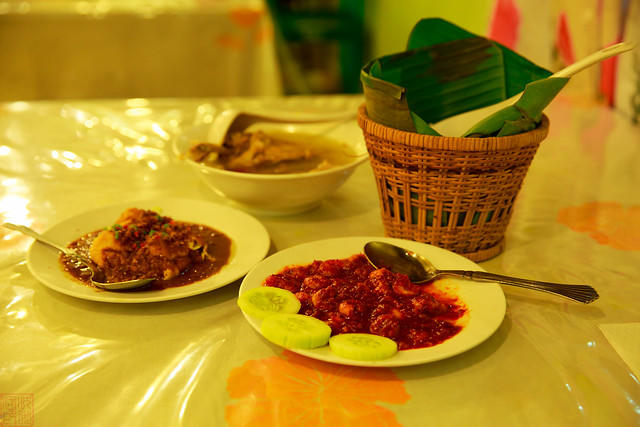Peranakan or Nyonya cuisine has earned a devoted following across Asia, and rightly so. These mouthwatering dishes bursting with flavours provide visitors a glimpse into the rich food traditions of the community.
The Peranakans are descendants of Chinese immigrants who settled in these parts around the 15th century and married the local Malay women. The intermarriage gave rise to a distinct bloodline and a unique group rich in culture and tradition.
In Malaysia, the Peranakan culture has a stronghold presence in the historical states of Melaka and Penang. Along with their culture, their language is also unique. They speak the Baba-Malay Dialect, which is a mixture of Malay, English, and Hokkien. Peranakan men are known as Babas, while the women are known as Nyonyas.
Their cuisine is also deeply inspired by both cultures. Nyonya cuisine is a delicious mixture of Chinese cooking techniques with the local Malay spices giving rise to a rich and aromatic cuisine named in honour of the female members of the Peranakan community.
Key ingredients of Nyonya cuisine include tamarind, coconut milk, belacan (shrimp paste), lemongrass, candlenuts, chilies, galangal, laksa leaf, and rempah (wet spice made of a variety of herbs and spices). It is these ingredients that contribute to the cuisine's unique flavours, containing spicy, sweet, sour, and savory notes.
Cooking and serving Baba Nyonya dishes is more than just a meal. It is a delightful experience as you get to learn about their culture and also enjoy their mouth-watering dishes. In this article, we will look at some of the popular Baba Nyonya food in Malaysia. If you would like to learn more about cooking, check out A Guide to Understanding Cooking.
Let’s go.

Best Nyonya Dishes
Ayam Pongteh
One of the most popular Nyonya foods from the city of Malacca is Ayam Pongteh. This is a simple and straightforward recipe when compared to other Peranakan dishes. Its easy cooking method and the use of everyday ingredients make it a local favourite.
Ayam Pongteh is a braised chicken dish that is cooked together with potatoes in a gravy of taucheo sauce (fermented bean sauce), aromatics, soy sauce, and a touch of gula melaka (dark palm sugar). The rich flavour of this dish is primarily due to the use of taucheo and gula melaka.
Every family has their own version of Ayah Pongteh, so ingredients may vary. While some might add bamboo shoots, others add potatoes to the dish. No matter what, the secret is to let it cook slowly for the juices to seep through and make the sauce flavorful.
Nevertheless, the essence of the dish remains the same: a savoury hearty one-pot chicken dish that warms the soul and reminds you of home.
In order to preserve the flavour and texture of this dish, one must make sure the taucheo that is used is not too salty and crumbly, as it is the base of this authentic cuisine.
Ayam pongteh is usually served with white rice and sambal belacan (red chilli paste) on the side. One of the plus points of this dish is that it tastes even better after being kept overnight.
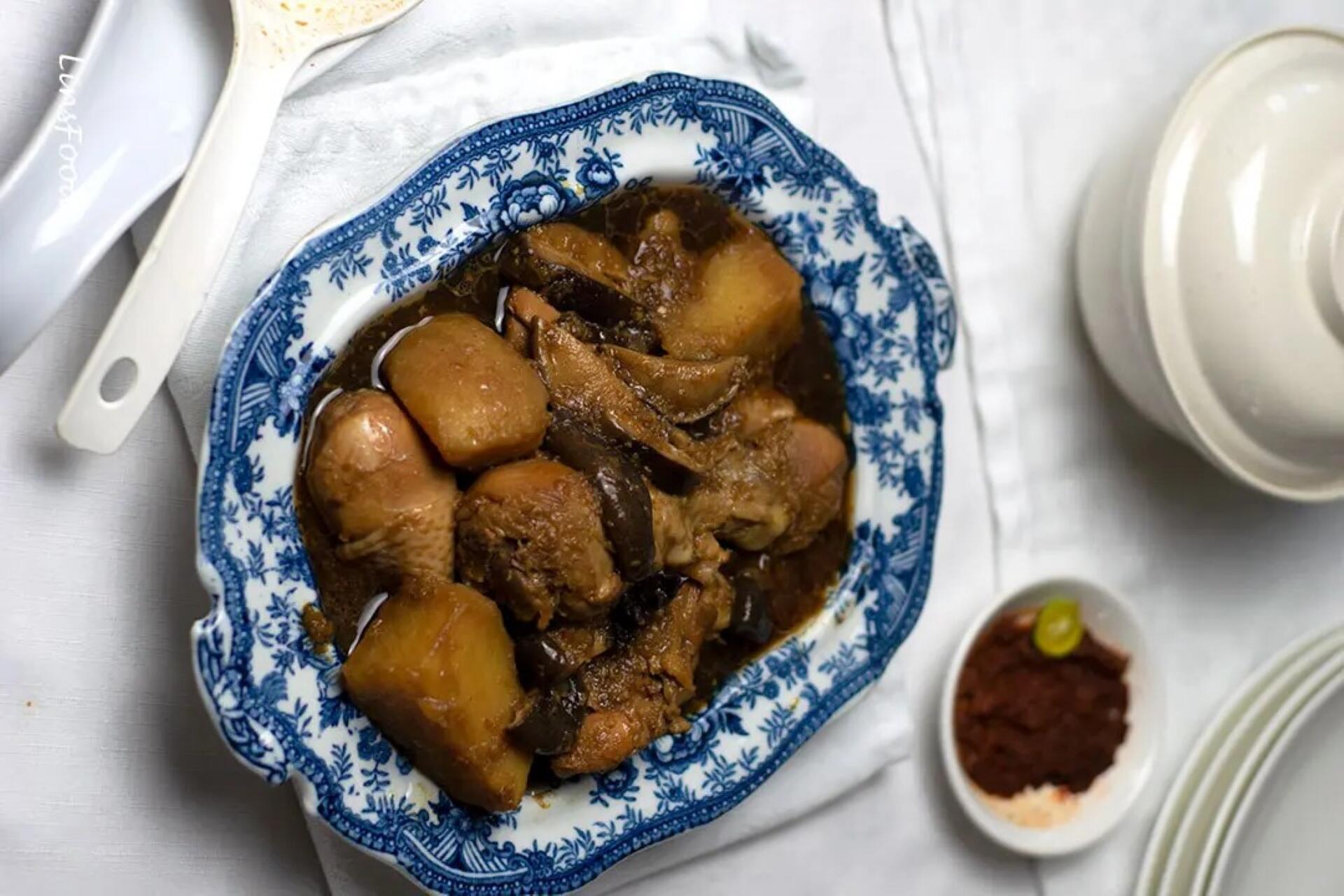
Image by Singaporean and Malaysian Recipes
Click here to check out the recipe!
Laksa Nyonya
Laksa is one of Malaysia’s most iconic dishes. It is so popular among Malaysians that nearly every state in the country has its own version of this dish. From the tangy asam laksa from Penang to the creamy laksa Sarawak and sweet laksa Johor, each state adds its unique local flavour and taste to this celebrated Peranakan cuisine.
Nyonya laksa is considered unique because it has a rich coconut-based broth that is cooked with chicken bones and prawn shells. It is usually served with thick rice noodles and toppings of bean curd puffs, bean sprouts, prawns, sliced fish cakes, hard-boiled egg, and thinly sliced cucumbers.
This dish, which is commonly referred to as “laksa lemak” (fatty laksa), is a wonderful treat for all.
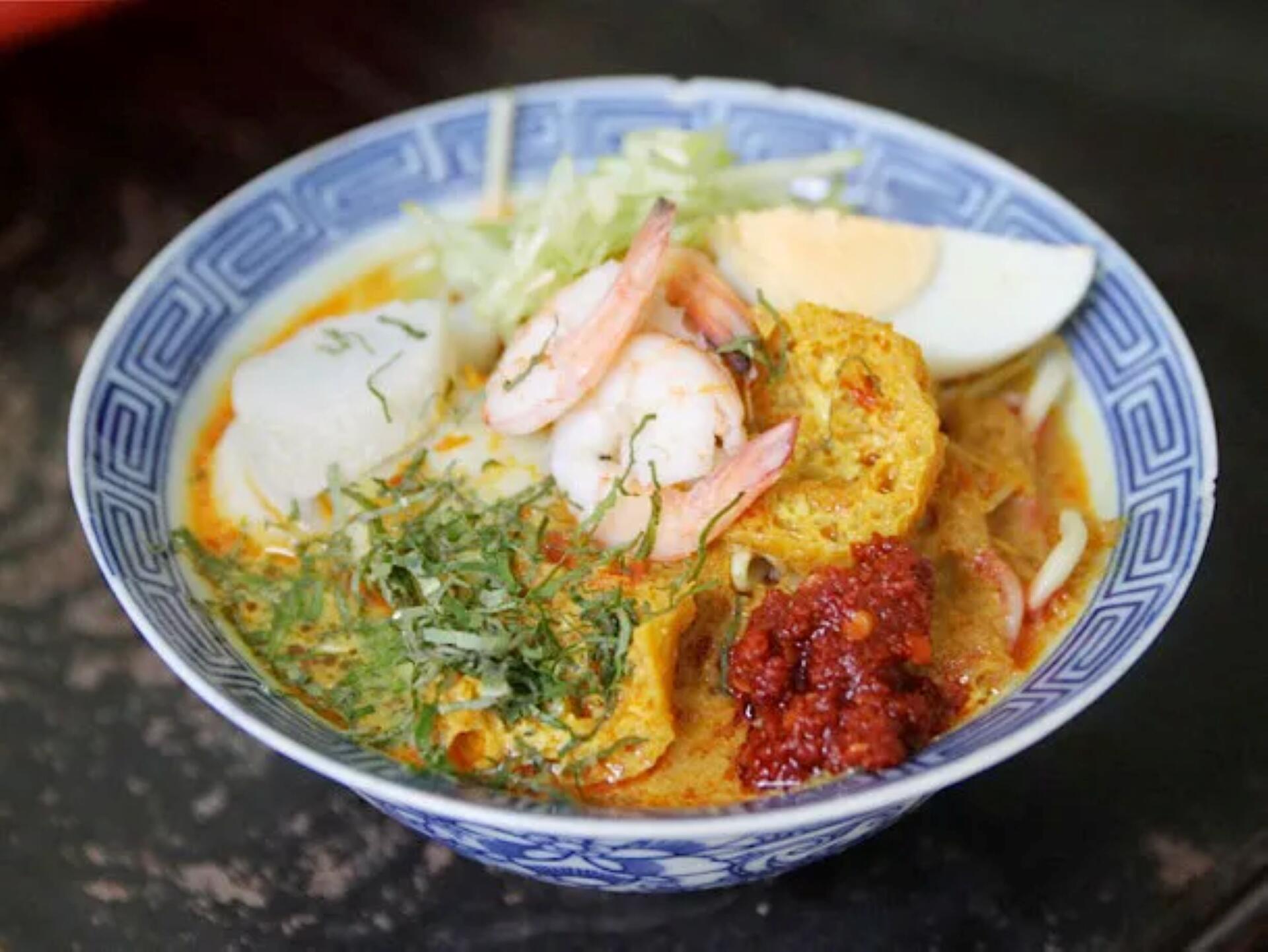
Click here to check out the recipe!
Cendol
Cendol is a coconut dessert made from shaved ice, which is piled in a bowl and topped with red beans, green jelly, and creamy coconut milk. The base of the dessert consists of green, worm-like jelly made from rice flour and flavored with pandan leaves.
It is the pandan leaves that give the distinctive green colour to cendol.
Besides the coconut milk (santan) and green jelly, the other signature ingredient in Cendol is gula melaka. The coconut milk (santan) used in the cendol has to be fresh to give distinct rich, creamy taste that defines this icy dessert.
Cendol serves as a delicious thirst quencher during scorching hot weather. Roadside vendors usually sell this dessert not only in Melaka, but also all across Malaysia. It is also available at hawker centres and some restaurants.
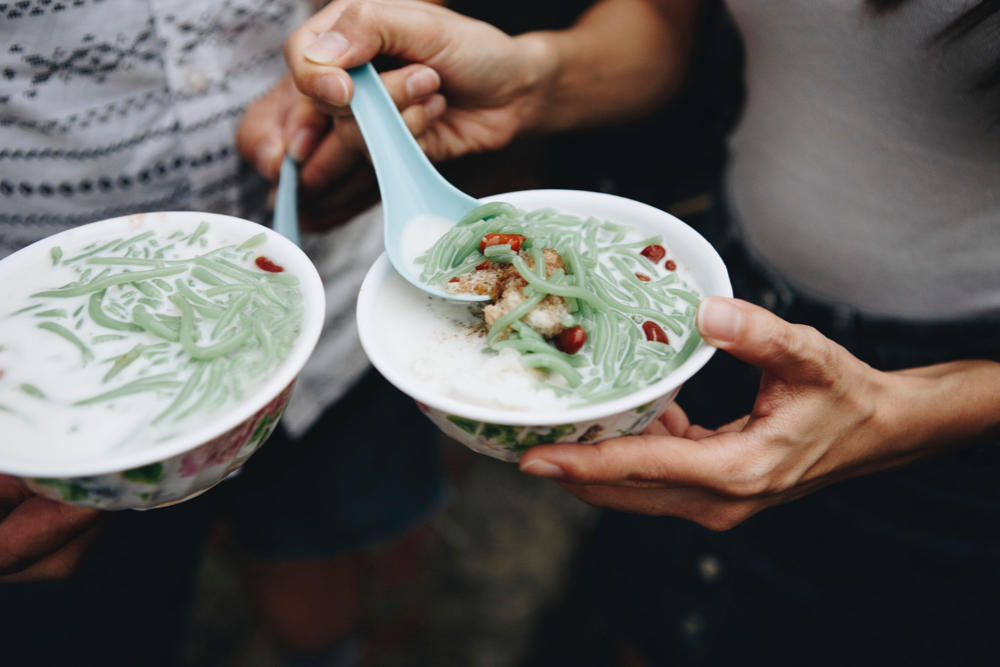
Image by rawpixel.com on Freepik
Click here to check out the recipe!
Do you want to know more about Indian food in Malaysia? Check out Awesome Indian Dishes that is Loved By Everyone!

Ikan Gerang Asam
Ikan Gerang Asam is a classic Peranakan food that perfectly captures the unique tastes of Baba Nyonya cuisine: sour, salty, and spicy. Ikan means fish, while Asam means sour, so this dish is basically a hot and sour fish.
Malaysians love this dish because it is packed with bold flavours, and the ingredients add a fiery punch to the dish.
Fresh fish is boiled together with eggplant, tamarind, okra, bamboo starfruit, kaffir lime and so on to give an interesting taste and aroma. The tang and heat in the gravy are absorbed not only by the fish but also by the assortment of vegetables in it. It is a fantastic dish that is eaten with rice.
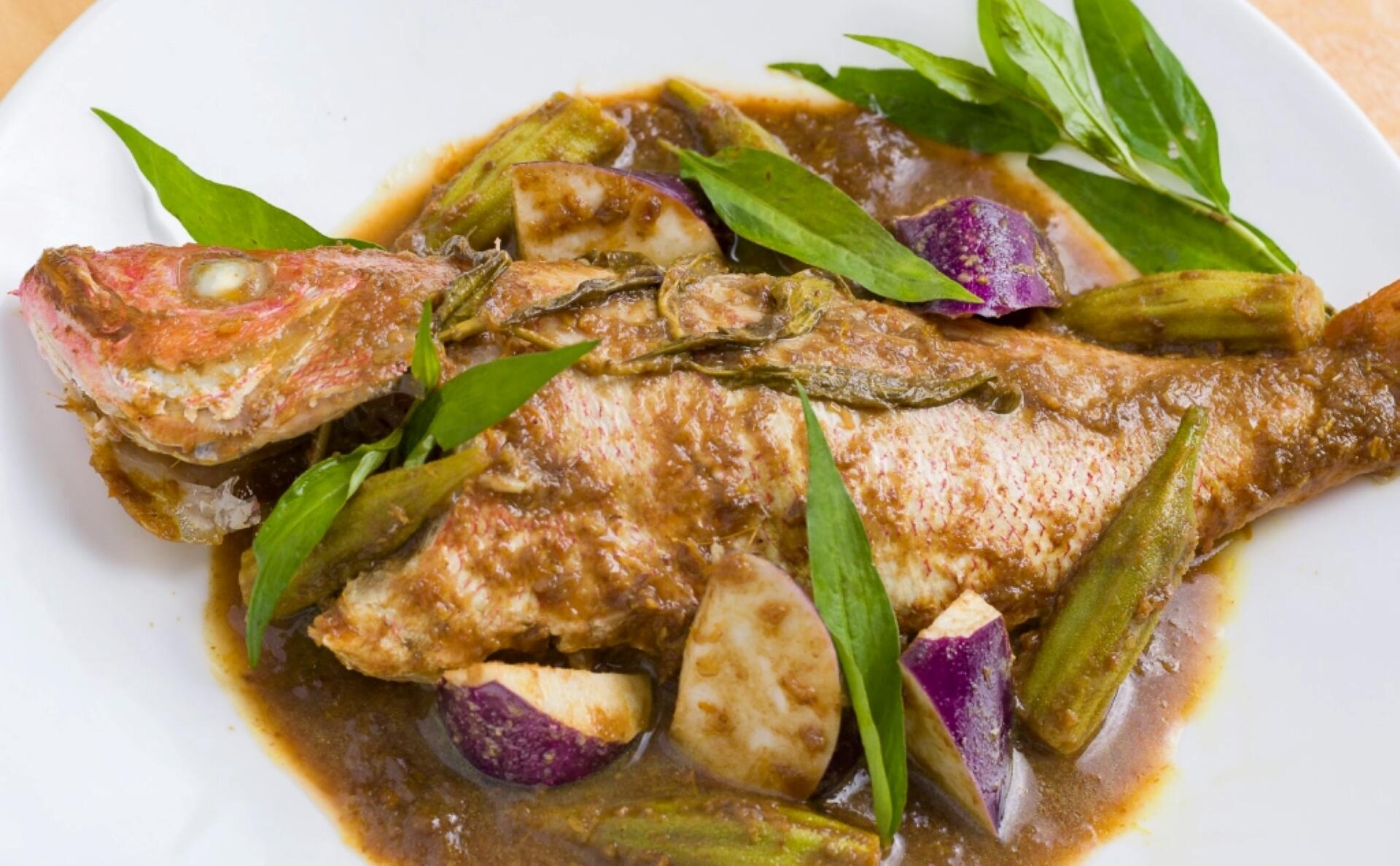
Image by Baba Nyonya Peranakans
Click here to check out the recipe!
Ang Ku Kuih
The Nyonyas are well-known for their variety of kuih (popular snack in Southeast Asia), which comes in different colours, shapes, and forms. In Malaysia, these kuih are enjoyed during breakfast or afternoon tea.
One of the popular ones is the ang ku kuih or red tortoise cake. Of Hokkien origin, these bite-sized goodies are a hit among Malaysians due to their sweet taste and soft texture.
The Peranakans have been passing down this traditional Chinese dessert from one generation to the next. The skin of Ang Ku Kuih is made of glutinous rice and mashed sweet potato, which gives it a sticky and chewy texture. Typically, the cakes are filled with green beans, red beans, or mung bean paste, and placed on a piece of banana leaf before being steamed.
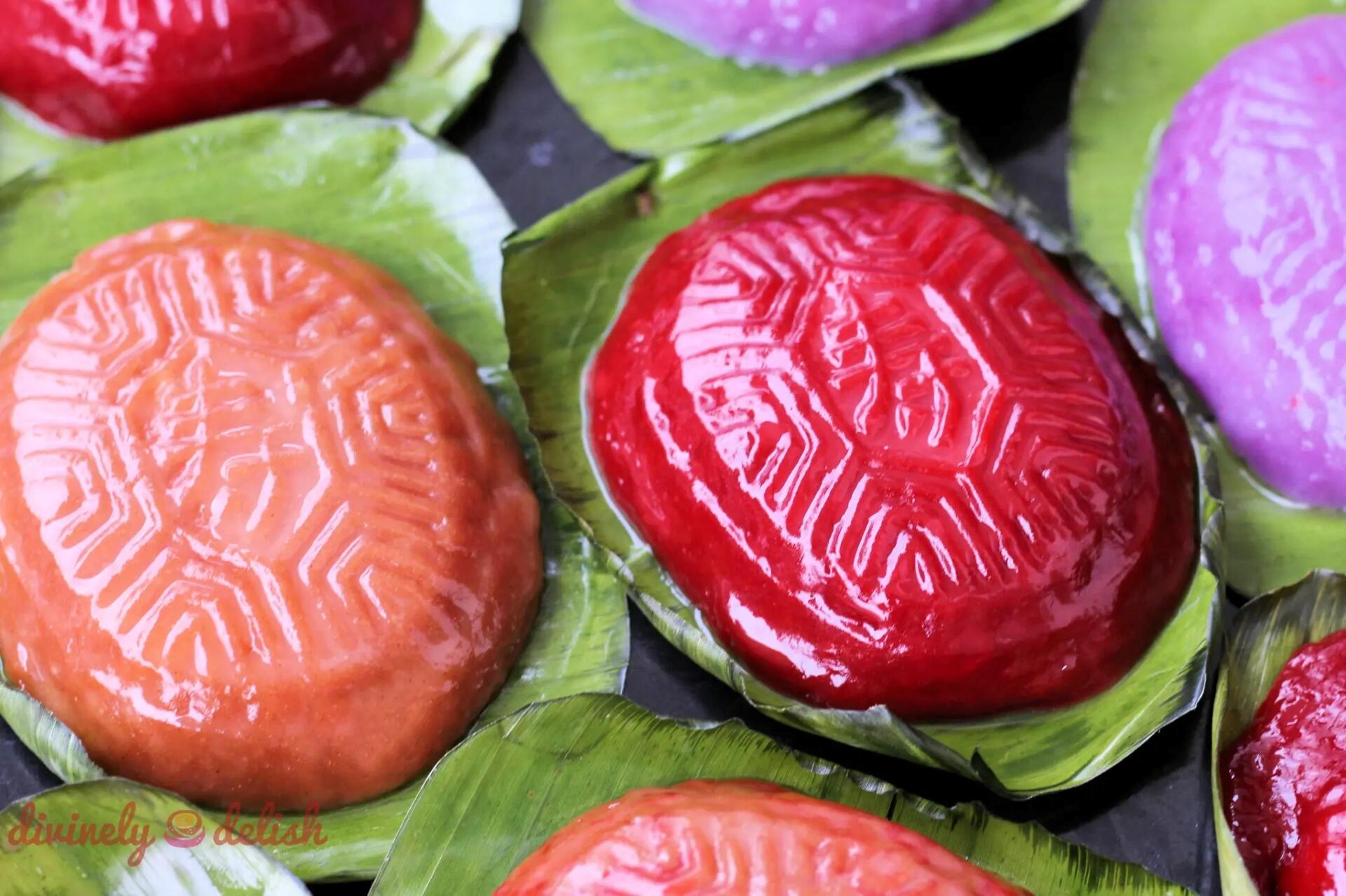
Image by Divinely Delish
Click here to check out the recipe!
Pai Tee
Pai Tee, also called Kueh Pie Tee, is a popular Asian snack served in Baba Nyonya eateries and also food stalls throughout Malaysia. This crispy pastry dish is especially prominent in Penang and Malacca—the hub of Peranakan culture and the city-state of Singapore.
Closely resembling the Chinese Popiah or spring roll, which uses similar fillings, the shape of Pai Tee may vary depending on the location. While Melaka’s Pai Tee resembles a top hat, in Singapore, the Pai Tee looks like a cup.
Pai Tee is a thin and crispy pastry tart shell filled with a mixture of vegetables, chopped prawns, shredded turnips, jicama (yam beans), bamboo shoots, and a blend of spices. It is then topped with coriander leaves, omelette strips, and shrimps and usually served alongside chilli sauce.
Jicama, which adds a slightly sweet and crunchy texture to the filling, is a key ingredient of authentic Pai Tee recipes. If jicama is unavailable, you can substitute it with Chayote, which boasts a similar flavor profile.
To make the shells, heat up the mould, dip it into liquid batter, and then place them in hot oil. Fry them till they are golden hot, and then drain them on a kitchen towel. The old-fashioned way of frying Pai Tee shells causes the top to fold up like a rim, which is why it is also affectionately called “top hats.”
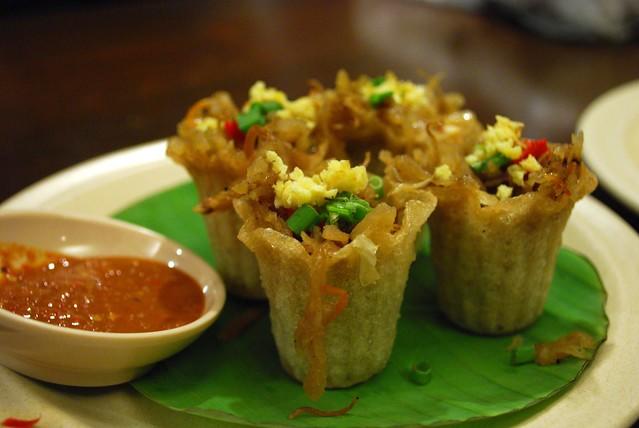
Click here to check out the recipe!
Nyonya Acar Fish
Nyonya Acar Fish, also known as Acar Hu, is a flavorful, popular Peranakan specialty featuring pickled fish that evokes the golden old days. This mouthwatering dish is known for its spicy, sweet, and sour flavours. Passed down through generations, this dish is a must in your pantry.
The acar fish is made by first deep frying the fish in hot oil until it is crispy. Then the rempah (spicy paste) is sautéed in a hot wok already flavored with turmeric, and after it turns aromatic, sugar, vinegar, and deep-fried salted fish are added to it. A quick toss and your delicious pickled fish is ready.
The addition of ginger, garlic, chilies, and shallots brings out the sweet and sour flavours and complements the dish well.
The original recipe calls for silver mullet, but you can choose other types of fish like mackerel (ikan tenggiri) and red snapper (Ikan Merah) as well. The perfect balance of flavours makes this dish irresistibly tasty.
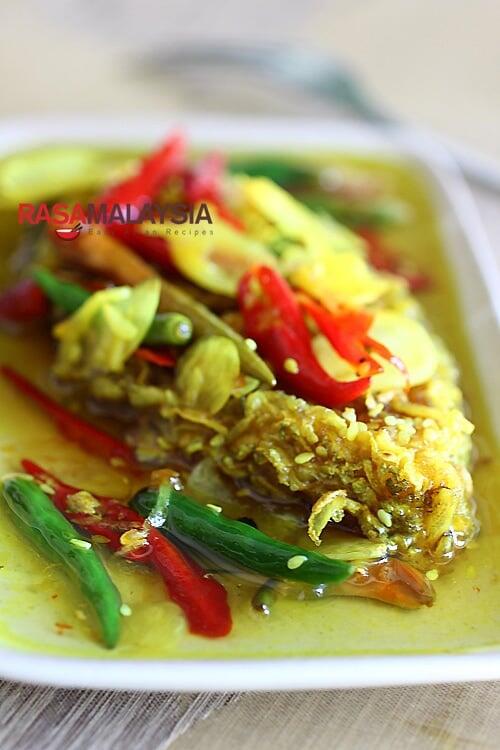
Click here to check out the recipe!
Why Should You Cook?
There are multiple reasons why you should cook at home or learn how to cook if you don’t possess these vital skills. Whether you are a student or a working adult with a busy schedule, cooking and preparing your meals rather than eating out is a habit worth considering. We have listed out the three key benefits of cooking below:
Lead a Healthier Life
Preparing fresh food at home is definitely healthier than eating store-bought, frozen food, or even processed food. When you cook your meal, you will also know exactly what you are consuming. You are more likely to choose healthier options with more nutrients as opposed to restaurant or cafe foods that focus solely on flavor.
This is why you end up consuming more calories when you dine out, where even a starter dish alone can exceed 1,000 calories.
Furthermore, when cooking at home, you have full control over the appropriate portion size and the ingredients. This not only helps you follow a healthier diet but also lowers the risk of obesity.
Save Money
Going out for a meal or ordering food from the multiple food delivery services, such as Grab Food and Food Panda, can quickly turn expensive. The convenience of these food ordering apps often leads to overspending without you even realizing it. Also, when you eat out, you tend to spend additional money on drinks and desserts as well, not to forget the service charge and tips.
In contrast, cooking your meals at home is definitely cheaper, especially if you plan your meals in advance and buy your ingredients from an affordable store. If you have the space, you can even save more if you have the space to grow your fruits and vegetables.
Boost Self-esteem
Cooking is a great option to build your self-esteem. Learning and perfecting recipes and serving delicious food to your family and friends can work wonders on your self-esteem. The gratifying feeling you get when you successfully cook a dish or when someone compliments your cooking will boost your confidence and make you believe that you can master anything you want.
Are you a total beginner feeling inspired to learn to cook? Or are you looking to master a specific style of cooking? Either way, Superprof, one of the most popular online tutoring sites, can help you.
Here you can find the best tutors to suit your needs. You can opt for physical or online learning sessions based on your preference. Also, you can schedule your lessons to suit your convenience. All you have to do is discuss with your tutors what times work best for both of you.

